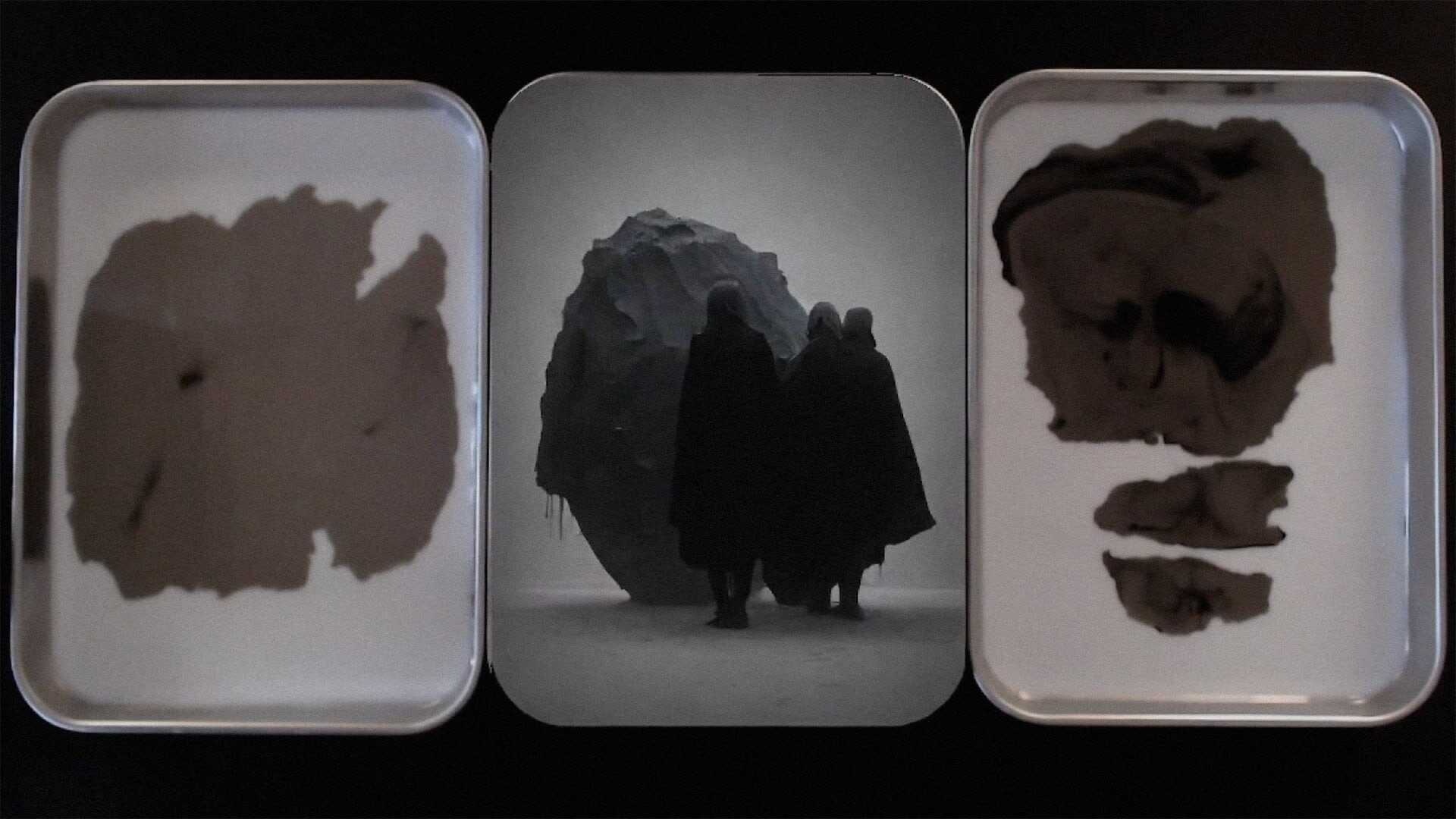- | 8:00 am
This art project is like a Rorschach test for AI
Hugues Bruyère shows how human-machine collaboration can produce wondrous things.

I’ve spent the last hour glued to the screen, mesmerized by the art of Hugues Bruyère. I kept looking at his video loops again and again, scrolling down his Threads homepage, hypnotized. I’ve never seen anyone merge physical media and artificial intelligence like this—turning the technology into a true artistic tool that actually makes sense and is pretty. Bruyère has cleverly used AI to create live images from manipulating physical media like magic putty, acrylics, and ink.
In one of his videos, he uses an eyedropper to put black ink into a triptych of small flat plates full of milk. As he drops the liquid, the amorphous dark shapes come alive instantly. The drops in the first plate transform into two rough, classically drawn figures for a split second, only to briefly morph into mountains that then change into a group of people with tunics wandering across a white field, ultimately becoming a dead, shapeless stain. The second plate’s ink droppings quickly go from a woman dancing to a person by a river, some dead trees, a flock of crows, and some mountains that dissolve into another static blob. In the third, the ink makes a human figure in the distance, walking under three stacked clouds in the rain.
To do all this, Bruyère—who is chief technologist, innovator, and partner at Dpt.co, a design studio that creates interactive and augmented reality experiences—uses Stable Diffusion and SDXL Turbo, a diffusion model that allows real-time rendering of AI imagery. Rather than giving the AI a text prompt, he uses an image-to-image pipeline. This is a workflow typically used to change the style of photos or to come up with new versions of existing art, like reinterpreting a photo of your friend as an anime character.
In this case, however, the camera captures whatever he is doing in front of it. Then the AI sees things in it according to some stylistic and motif guidelines that Bruyère gives it before each art session. You can think about it as a Rorschach test for the machine. This is a natural process for diffusion AI, which normally works by interpreting randomly generated noise, seeing shapes in the chaos until it identifies them, progressively refining those shapes to match the description of the text prompt until a clear image appears.

In the same clip, Bruyère switches the AI focus from plate to plate and we see other things spring to life. Misty forests. Peaceful landscapes. A portrait of a beautiful woman named Paola seemingly drawn by Jacques-Louis David. A group of Bene Gesserit slowly walking toward you.
Maybe you see something else, but that’s why Bruyère’s project is so special. Technically it is not so complex, but it feels magical on a very basic human level. We humans are watching the results of the machine taking a Rorschach test, which then becomes a Rorschach test for the humans watching the machine dream. It’s a beautiful symmetry, a creative cycle of imagination that feels right.
Perhaps Bruyère’s work is a sign that there’s hope for artificial intelligence and the human brain to create together, rather than becoming adversarial entities in the AI hamster race.





































